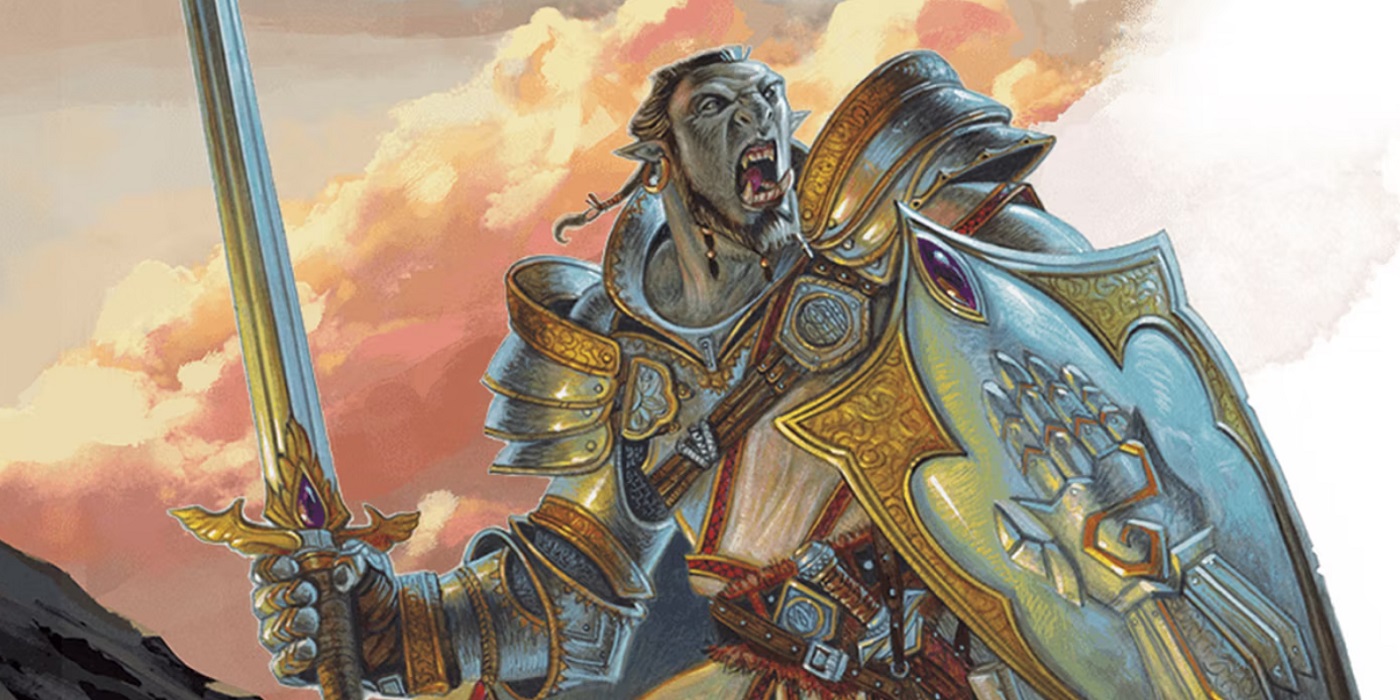‘One D&D’ Paladins – Worse Paladins Than ‘One D&D’ Clerics


One D&D’s new Paladin rules take everything cool about being a Paladin, distill it down, and then make Clerics better at it.
We’re back with another deep dive into the latest One D&D playtest packet. This time we’re leaving behind Druids, which felt like they needed way more time baking before they were ready to playtest, and instead looking at Paladins.
Paladins, in 5E, are one of the most powerful six levels of a class out there. At their core, they are a melee class that can cast spells. They use their limited spells to either empower themselves or, more importantly, to smite enemies. And typically you’d see them up through about the 6th or maybe 7th level when their Class Features gave way to multiclass potential. Because players gravitate towards two things for Paladin abilities: Divine Smite, and Aura of Protection. With maaaaybe a Paladin’s Sacred Oath 7th level aura getting to play if they weren’t immediately multiclassing into Sorcerer.
The One D&D rules understand that. And whether they meant to or not, end up making Clerics better at being Paladins than Paladins. Let’s take a look.
One D&D’s Paladin – Smite Lite
Paladins are a tricky thing to balance. Because on the one hand, they are capable of some truly amazing damage. With Divine Smite they can, potentially, burn a high-level spell slot when they get a critical hit and deal scads of damage. This is perhaps why in the One D&D playtest, that’s the first thing to be nerfed. Divine Smite is no longer capable of dealing with critical hit damage. You also can only do a Divine Smite once per turn.
More importantly, you can’t use it on the same turn you cast a spell. This means no more casting Smite Spells and then ALSO using a Divine Smite. This is very interesting because WotC upgraded all of the Smite Spells (more on that in a moment).
Admittedly, yes, you can now use Divine Smite with ranged weapons. But WotC seems to want to take out the ability of classes to go nova in big dramatic ways. So those of you eager for the Fighter playtest rules might want to brace yourselves to see how they massacre Action Surge. Can’t wait to read how the Fighters will only be able to make one extra attack with an Action Surge and then they’ll gain a level of Exhaustion afterward. Or whatever watering down that is somehow presented as an improvement ends up being.
One D&D Paladins can’t go nova anymore. Which is maybe fine. It’s a lot less dramatic, for sure. But for whatever reason, a lot of the Paladin’s other identity gets pushed to later levels.
They still get Lay on Hands which grants them a pool of healing they can dish out as a Magic action. Or they can expend 5 hp to cure Poisoned from a creature. But they can’t cure diseases (and in fact, the Divine Health feature, which made Paladins immune to disease is gone) but let’s be honest, when did that ever come up? WotC’s official modules never use the disease mechanic and unless you’re playing with a sadistic DM, neither does your table).
Owing to One D&D subclasses getting reshuffled to all work off of the same leveling structure, the Aura of Protection and Subclass Aura are swapped, which is fine. And at higher levels, they can use their Channel Divinity to make foes Dazed and Frightened for up to 1 minute until they take any damage.
At 15th level, your Lay on Hands gets an upgrade so you can now spend 5 hit points to end many Conditions on a creature. All in all, not bad, save for the Divine Smite nerfs.
And here’s where it gets interesting.
Smite Spells Upgraded
The Smite spells got some fairly significant upgrades in this playtest rules packet. They no longer take a bonus action to cast and require your concentration so you can set them up before an attack.
Now they work as a bonus action that you can take immediately after connecting with an attack. They deal less damage than a Divine Smite, but they’re more consistent, and more importantly, they’re capable of being used by any Divine Caster. This means that a Cleric, with more access to spell slots and quicker access to higher level spells, can do all the fun Paladin tricks of using a spell slot to smite an enemy, but they can do it more often and earlier.
While Paladins might run out of spell slots quickly, Clerics can keep going and going and going. And since they’ve gotten better melee features, they can hang with a Paladin with the exception of at 2nd and 5th levels. Especially since Divine Smite no longer works on the same turn you cast a smite spell.
Smite spells can also deal critical hit damage since they just deal “extra damage” to the target, which makes it viable for crits. This may be an oversight. But right now it means Clerics can out-Paladin Paladins.
Oath of Devotion
The Oath of Devotion subclass and the One D&D approach to Paladin subclasses in general feels pretty cool. The abilities are all pretty useful. And while the nerf to Smite will be sure to make a lot of players salty, the rest of the features should help make up for that.
Paladin’s Sacred Oaths now come with bonus spells, and Paladins can cast one spell from that list without expending a spell slot per long rest. Which is cool and exciting. They improve Divine Smite, so Oath of Devotion Pladins can now give Temporary Hit Points to nearby allies when they smite.
All in all, not too bad. The Paladin might need a bit more adjusting, but it doesn’t feel as much like a disappointment as the Druid does.
What do you think of the new Paladin?








